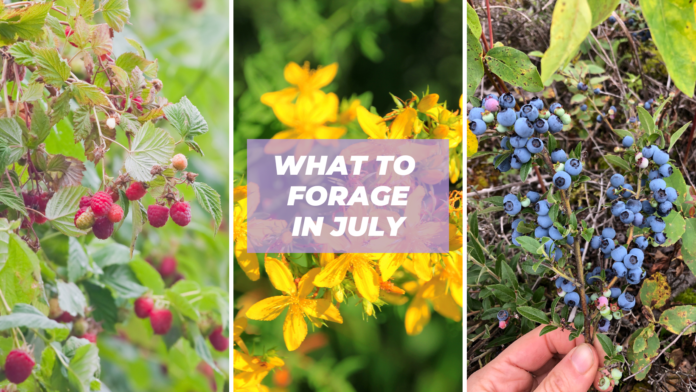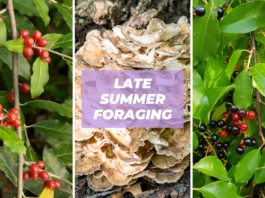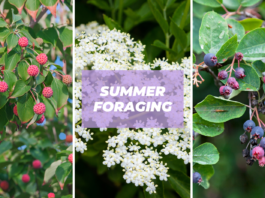This post may contain affiliate links, which means that I may receive a commission if you make a purchase using these links.
Looking to start your foraging journey this summer but don’t know what to forage in July? Start with these common wild edibles.
Foraging in July is an exciting time, especially where I live in the Northeast United States. Summer is in full swing, and berries, wildflowers, and certain edible mushrooms start to appear. Nature’s bounty is certainly on full display in July!
Please note that most of my recommendations for what to forage in July are best suited for the Eastern United States and Canada. However, I will include where you can find each plant and note where there are exceptions.
Foraging in the Summer
Before we dive in the common wild edibles to find in July, I want to offer my top tips for foraging in the summer:
- Things move fast in the summer. The warmer temperatures mean things mature and decay faster. The mushroom you see today may be not-so-delicious tomorrow.
- Check for bugs. insects are at peak activity during this time. Thoroughly check your foraging finds for bugs, even rinsing off or soaking what you can. Also, check yourself! Daily tick checks are a necessity in the summer.
- Be prepared to forage. The nice weather in the summer usually means more outdoors activities, and therefore more opportunities for foraging. You don’t want to be caught empty handed on an after dinner stroll when you come upon a prime specimen! I try to keep a knife and bag on me during most outdoor activities for this reason.
- Protect yourself. Outdoor time in the summer comes with unique potential risks. Remember what I said about summer insect activity? Protect yourself from mosquitoes and ticks by using insect repellant and wearing long-sleeved clothing. Also, wear your sunscreen!
Note: Please use caution when foraging plants for consumption. Do not eat foods you are not comfortable with identifying. See my plant identification resource recommendations below.
Alright, with that disclaimer aside, let’s get into it!
This post is all about what to forage in July.
What to Forage in July
Edible Berries
Cherry (Prunus spp.)
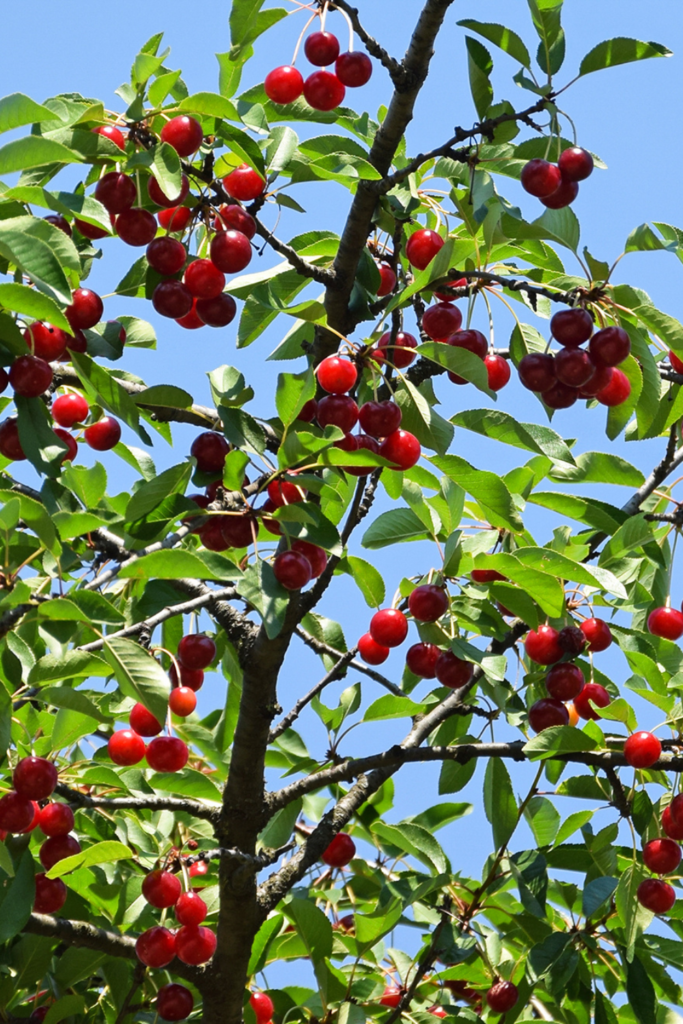
Cherry trees can be found nearly everywhere! They are often planted as ornamentals in cities and suburbia, but there are a few species that are native to the Northeast and grow wild (like black cherry Prunus serotina, pin cherry Prunus pensylvanica, and chokecherry Prunus virginiana.)
How to Find: Cherries have alternate oval, lightly serrated leaves. Flowers typically have five petals and are white to light pink. Cherries are stone fruit, meaning the fleshy berries surround a single seed (the botanical name for this is “drupe”).
How to Eat: Cherries make excellent jams, jellies, juices, and fruit leathers.
Raspberry (Rubus strigosus)
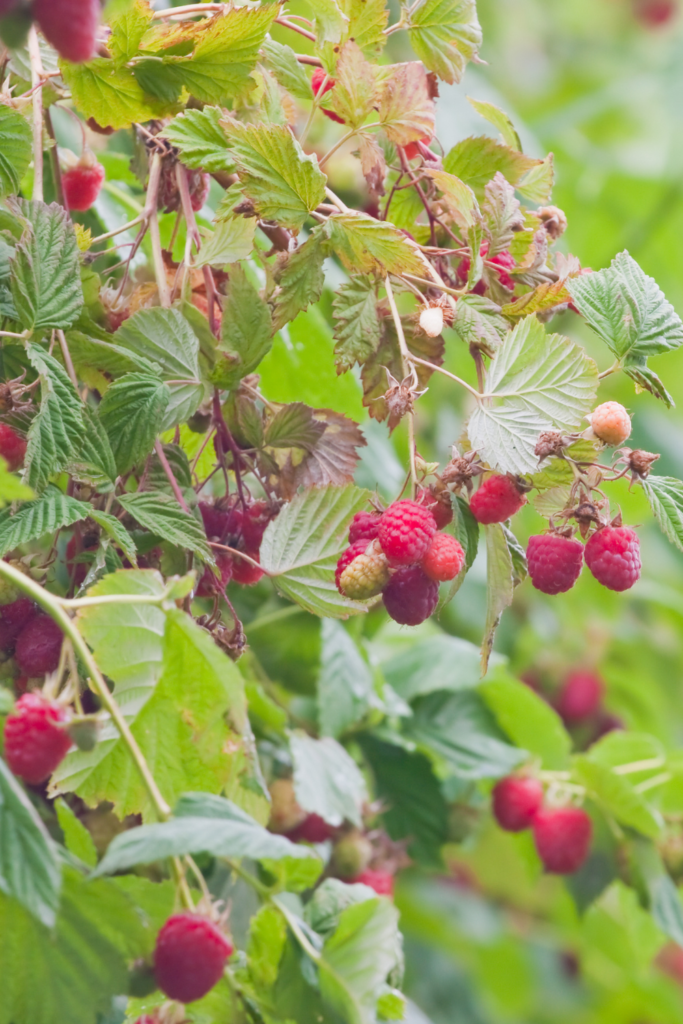
Did you know this grocery store favorite can also be found wild in much of North America? That is, if you can get to them before the birds do!
How to Find: Rubus species are often called “brambles,” thorny thickets found at the edge of woods and yards. Raspberries have a deep red/purple round stem (called a “cane”). Their large, pinnate leaves (which can be used medicinally in teas) grow in leaflets of three to five. Raspberries are aggregate berries, meaning they are actually a cluster of numerous drupelets around a central seed.
How to Eat: I probably don’t need to tell you how to eat raspberries. They are probably best raw, eaten as a trail snack or atop yogurt and desserts. Freeze raspberries that you aren’t going to eat within three days for smoothies, etc.
Blackberry (Rubus allegheniensis)
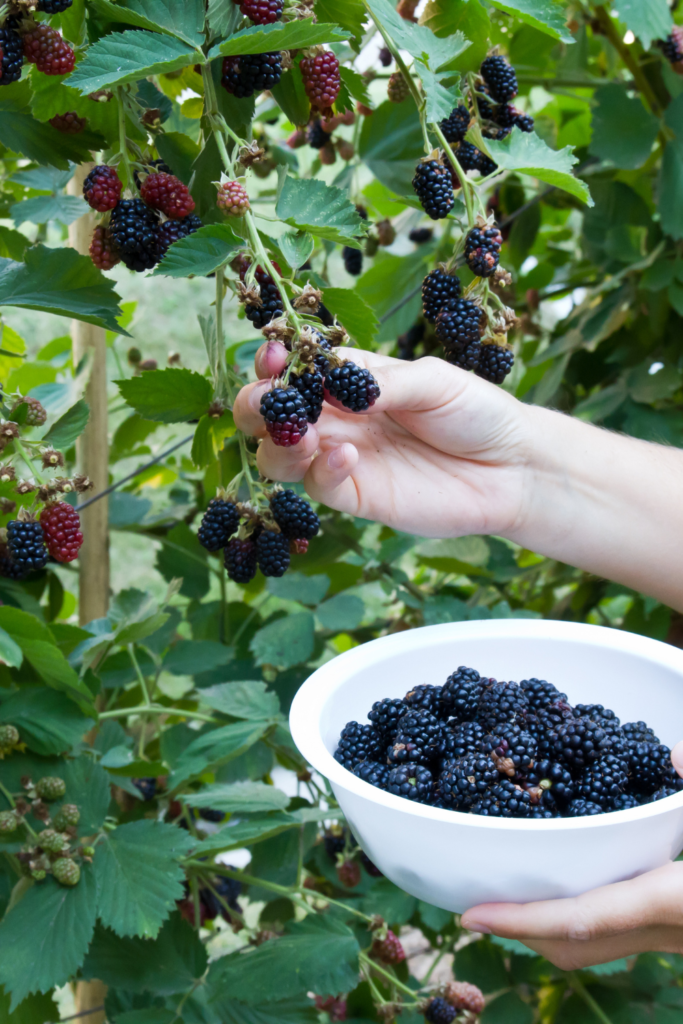
Blackberries are another supermarket favorite that can be found wild throughout North America, but the species likely to be found in the Northeast is Rubus allegheniensis.
How to Find: Blackberries look very similar to their raspberry cousins, but are distinct in a few key ways. Before berries appear in the summer, you can identify a blackberry cane because it will have one flat side (unlike the completely round raspberry canes.) Of course, the berry is a deep purple, but also when picking a blackberry the middle part of the berry (the “torus’) stays with the fruit. The torus stays on the plant when picking raspberries, and thus raspberries are hollow.
How to Eat: Blackberries are also best raw, eaten by the handful. I also particularly enjoy them in pies, like this Oregon blackberry pie.
Juneberry/Serviceberry/Saskatoon (Amalanchier spp.)
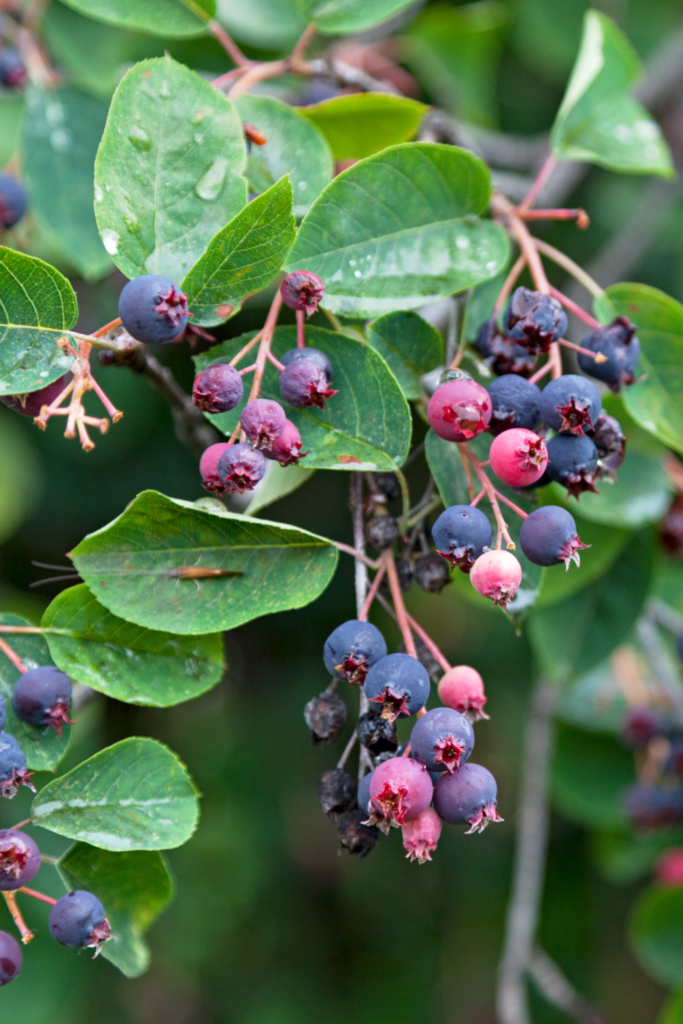
Juneberry is a fruit that goes by many names, but very few people have heard of these delicious berries! Severely underrated, juneberries look and taste a bit similar to blueberries, with a hint of almond. I find that “juneberry” is a bit of a misnomer, with fruit ripening closer to July-August where I live.
How to Find: Amalanchier species are shrubs or small trees that can be found across North America in sunny and well-drained areas, like at the edge of the woods or even along roadsides. Flowers have long, slender white petals that do not overlap. Berries are reddish-purple, about half an inch, and can range in shape from long and oval to round. Each berry contains several seeds that can be chewed and eaten (they have an almond-y flavor!)
How to Eat: Serviceberries are best fresh off the tree, but are also fantastic dried and enjoyed throughout the year!
Blueberry (Vaccinium corymbosum, Vaccinium angustifolium)
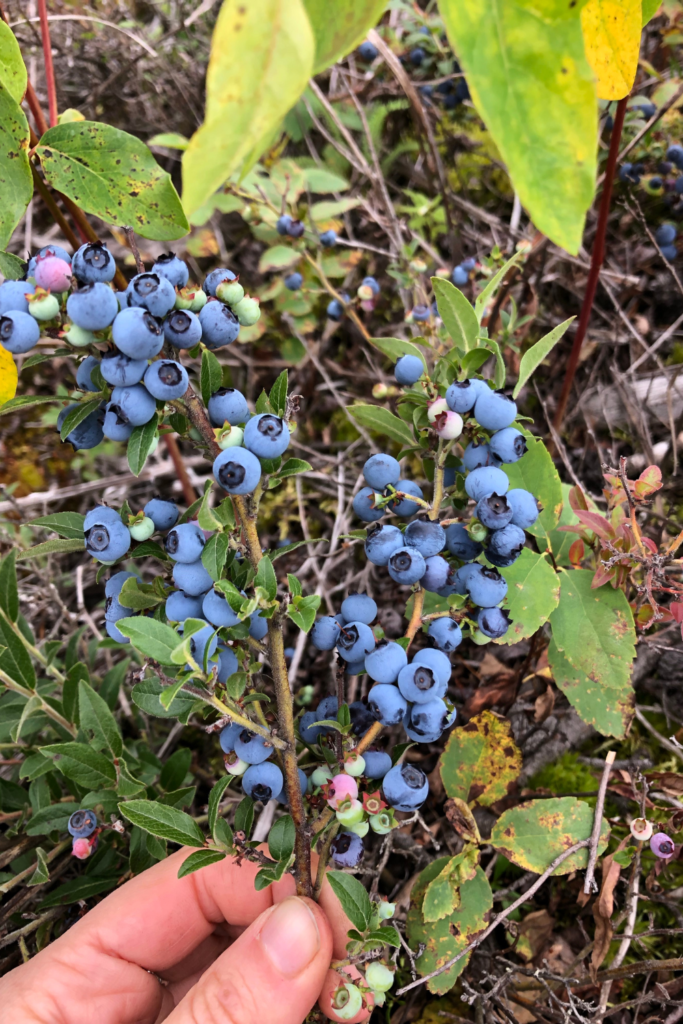
Blueberries are another summer berry grown commercially, but can be found growing wild in their native Eastern U.S. and Canada habitat.
How to Find: “Highbush” blueberries are the taller version that are grown commercially, but they can be found around swamps or lakes. Highbush blueberries have much bigger berries than their “lowbush” counterparts, which are lying shrubs more likely to be found on a rocky hike.
How to Eat: Eat them by the handful on your next hike, or enjoy them as a jam, jelly, or in a pie!
Edible Mushrooms
Chicken-of-the-Woods (Laetiporus sulphureus)
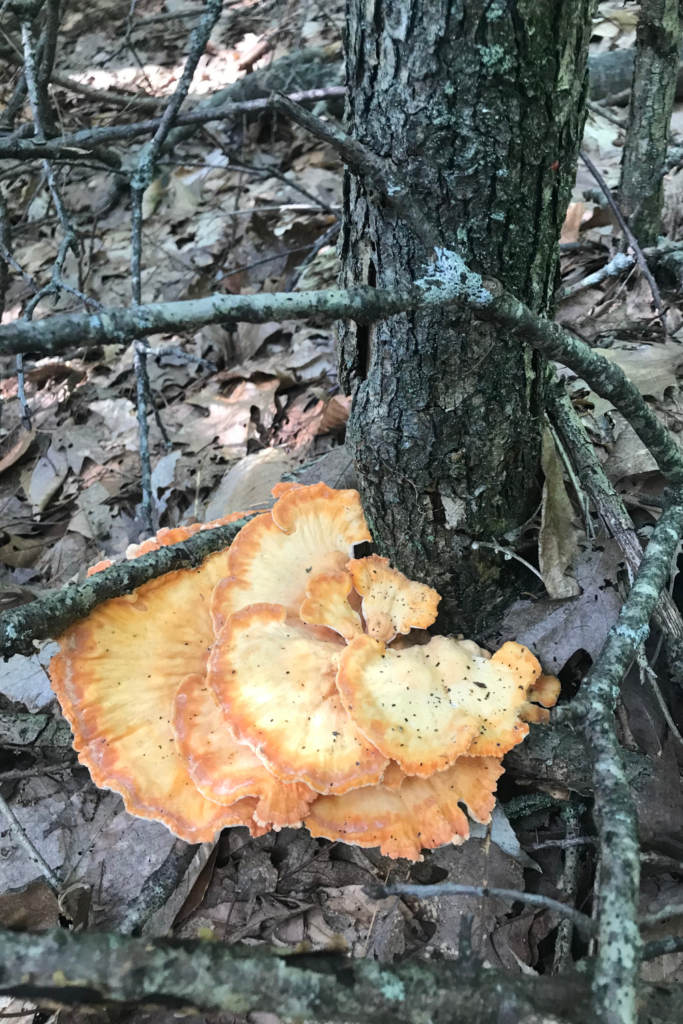
Chicken-of-the-woods, AKA chicken mushroom, gets its name from its chicken-like flavor after cooking. That’s right–it tastes like chicken! Plus, it’s an easy beginner mushroom that can be harvested abundantly throughout the summer.
How to Find: Chicken-of-the-woods is also called “sulphur shelf” for its almost neon yellow-orange coloration and flat shelf-like structure. Chicken mushroom is a saprophyte, meaning it grows on dead and drying trees. Check the underside of the mushroom before harvesting–there should not be any gills.
How to Eat: Make sure to cook chicken-of-the-woods thoroughly, as it is possible to have an adverse reaction. Cook them in butter or your favorite oil. You can even batter and deep fry them like fried chicken!
Chanterelles (Cantharellus spp.)
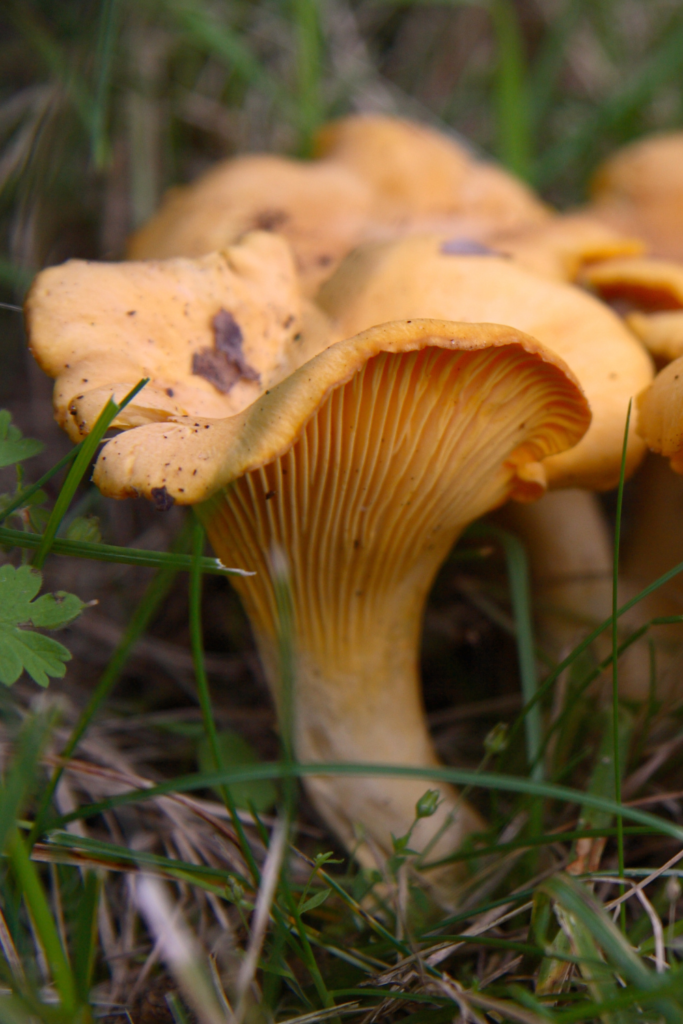
Chanterelle mushrooms are a chef and foodie favorite due to their beauty, versatility, and delicate flavor.
How to Find: Chanterelles can be found all over the world! They are orange, yellow or white and trumpet or funnel-shaped. Most species have folds on the undersides that run from the cap to the stem. Chanterelles grow on the ground often in coniferous forests. Do not confuse them for their poisonous look-alike that grows on trees (sometimes buried wood) and glows in the dark, the aptly named Jack-o-Lantern mushroom.
How to Eat: Simply cook chanterelles in butter to experience them in their simplest form! They are traditionally served atop meat entrees.
Common Wild Edibles in July
Staghorn Sumac (Rhus typhina)

Staghorn sumac is the species common in the eastern U.S., but sumac (Rhus spp.) is found all over the world. Sumac is a popular spice in Middle Eastern countries, and is an ingredient in the spice blend za’atar.
How to Find: Sumacs are an abundant shrub in the eastern U.S. They are perhaps most easily identified in the summer when their hairy red fruits ripen in dense clusters.
How to Eat: Sumac fruit has a tangy taste thanks to its high malic acid content. Sumac fruit can be dried and used as a lemony spice. Many also like to make “sumac lemonade” by steeping the fruit in cold water, straining, and sweetening.
St. John’s Wort (Hypericum perforatum)
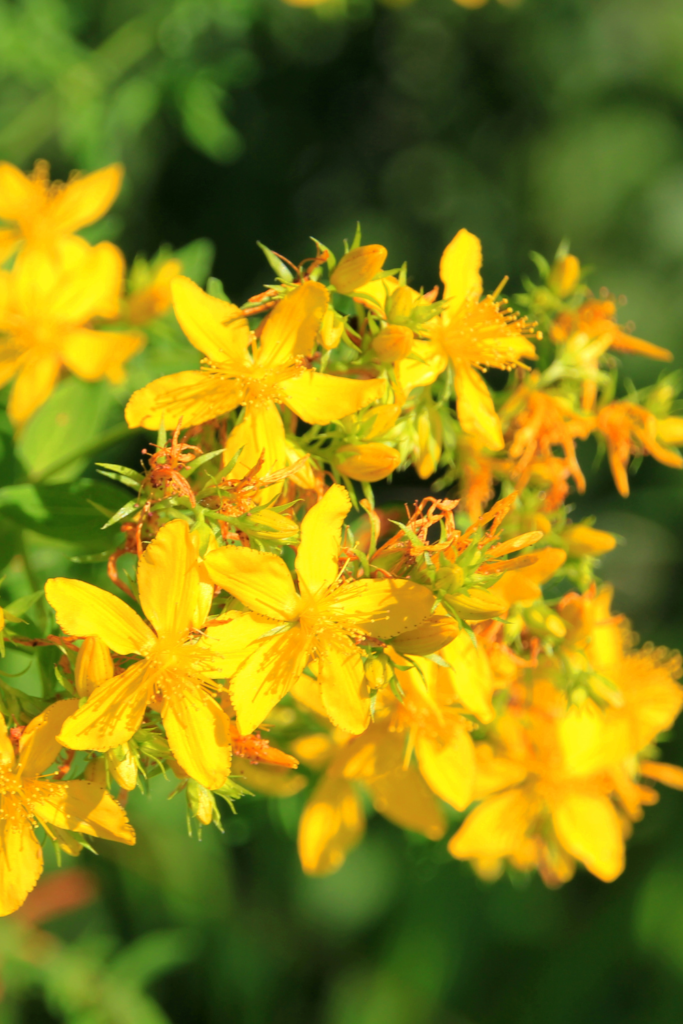
St. John’s Wort is a flowering herb that has been used in traditional herbal medicine practices for centuries.
How to Find: It seems like the sunny yellow flowers of St. John’s Wort are nearly ubiquitous. St. John’s Wort can be found in meadows and in urban and suburban areas with disturbed soil. Look for a bright yellow flower with black dots along the edges of the petals, and five leaf-like sepals below.
How to Eat: St. John’s Wort is typically dried and prepared as an herbal tea. However, check with your doctor before use, and St. John’s Wort has properties that can interact with certain medications.
Mullein (Verbascum thapsus)
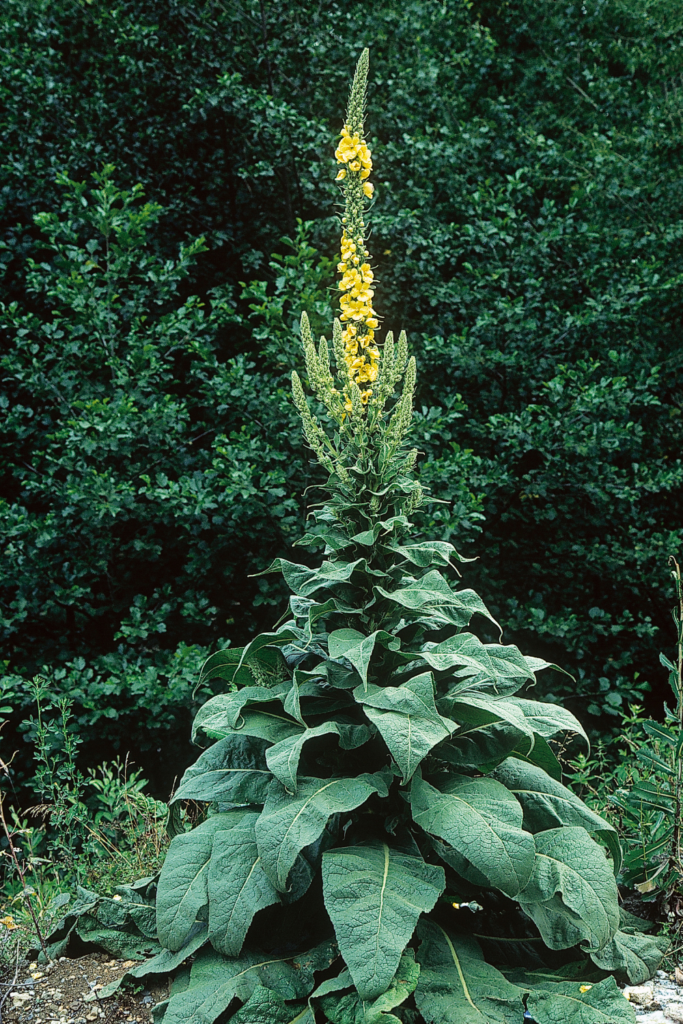
Mullein is another summer edible that has been used in traditional medicine for millennia. It can be found across the world, including the U.S., where it has been cheekily nicknamed “cowboy toilet paper” for its soft, wide leaves.
How to Find: Mullein is pretty distinct for a few reasons. The first year plant lies close to the ground, with its characteristic silvery-fuzzy leaves growing in a rosette pattern. Second year plants send up a tall (sometimes over 6 feet!) stalk that will bloom into a cluster of yellow flowers.
How to Eat: Mullein is typically dried and enjoyed as an herbal tea.
Beach Rose (Rosa rugosa)
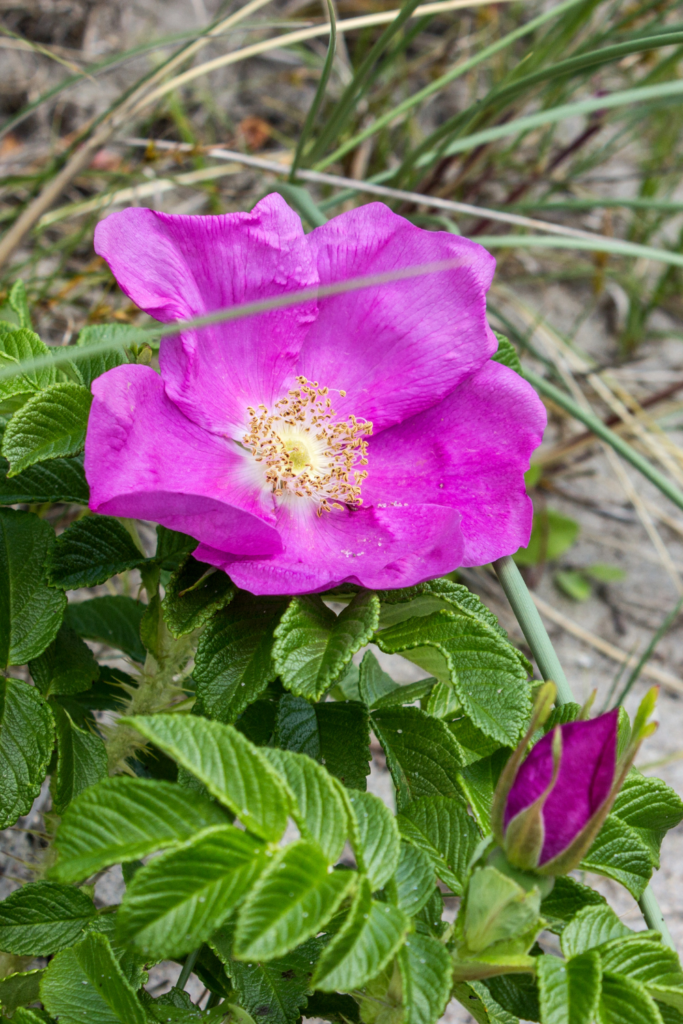
Beach rose is one of my favorite summer edible plants because it can be found at my favorite place–the beach!
How to Find: Beach rose is actually native to Asia, but was planted ornamentally in the U.S. and has since become invasive. You can find beach rose on beach coasts and sand dunes. Flowers are dark pink to white with five petals. Take a whiff–beach rose smells absolutely divine!
How to Eat: Petals can be collected and made into a fragrant tea, simple syrup, ice cream, or jelly. You can also use the rosehips (AKA the fleshy orange part of the rose flower just below the petals that contains the rose plant seed) to make a jam!
Foraging Resources
This is my favorite field guide to finding edible plants in the Northeast and Central U.S.
Hi, I’m Leslie, the founder of PunkMed
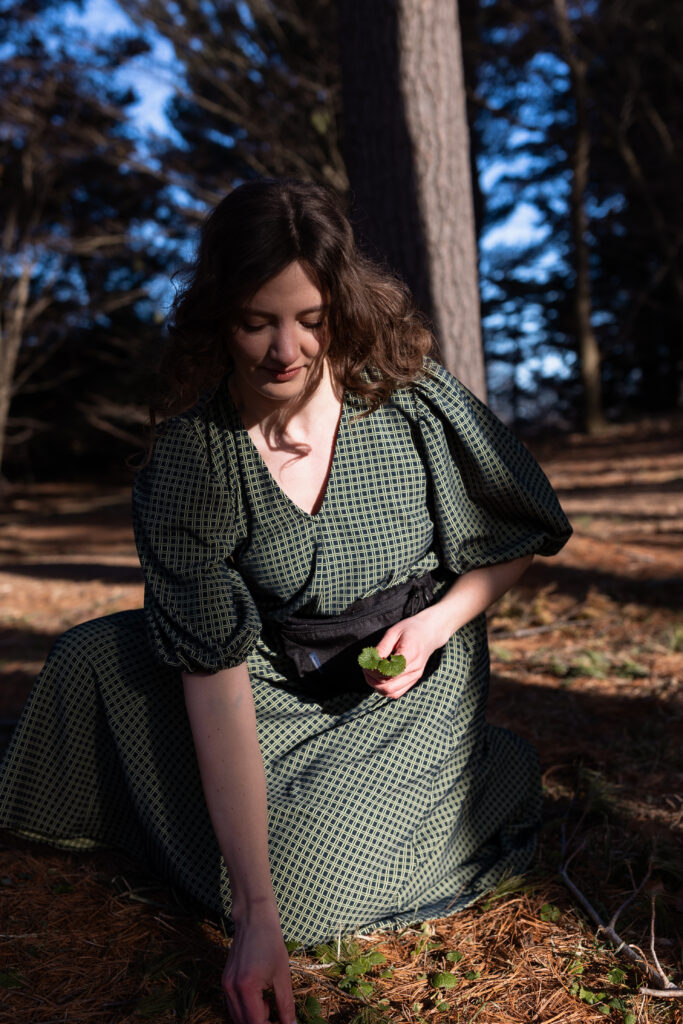
Hey friend! I’m so glad that you stopped by the blog today to learn about what to forage in July. Let me know what you find this summer!
If you’re into wild food foraging, urban homesteading, or living a more sustainable life–stick around! There are a good number of resources on my blog, and I always love to hear from my readers (that’s you!) Feel free to send me a DM on Instagram!
This post was all about what to forage in July.
